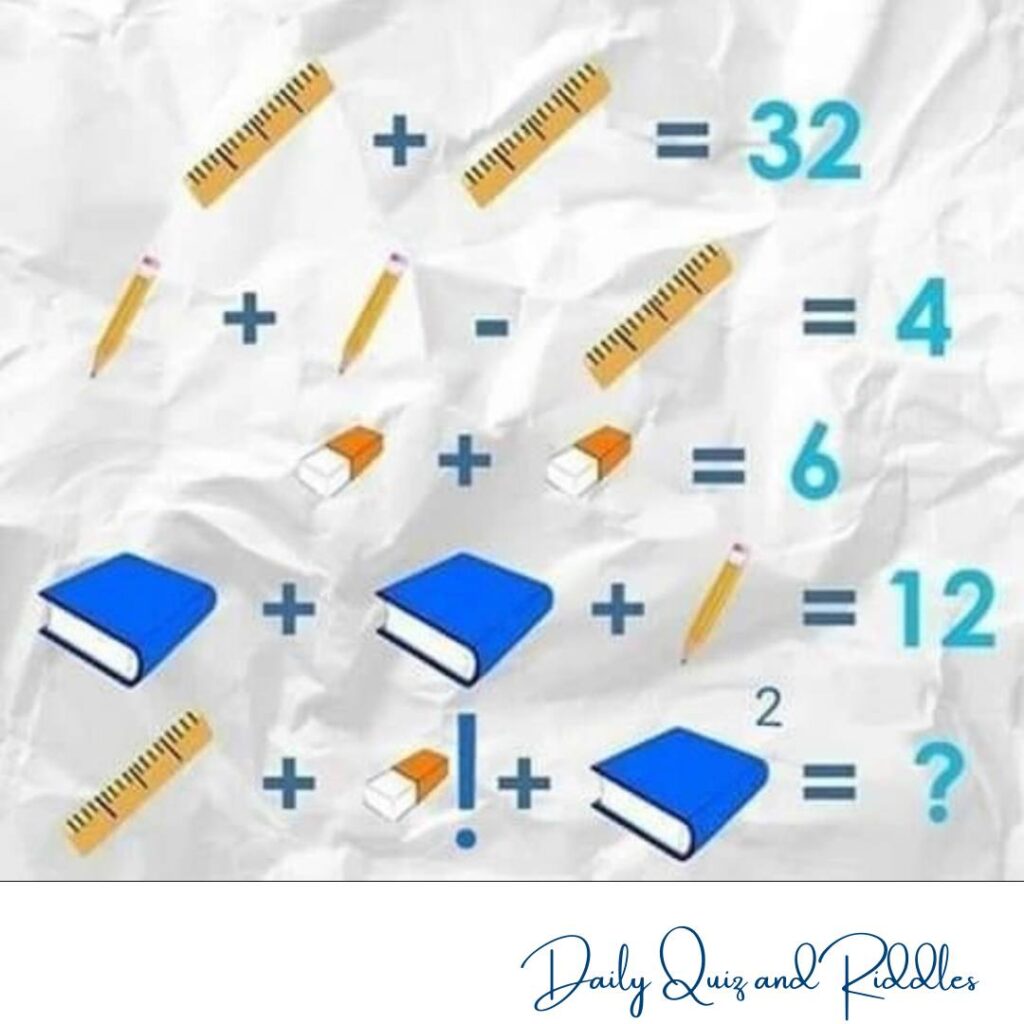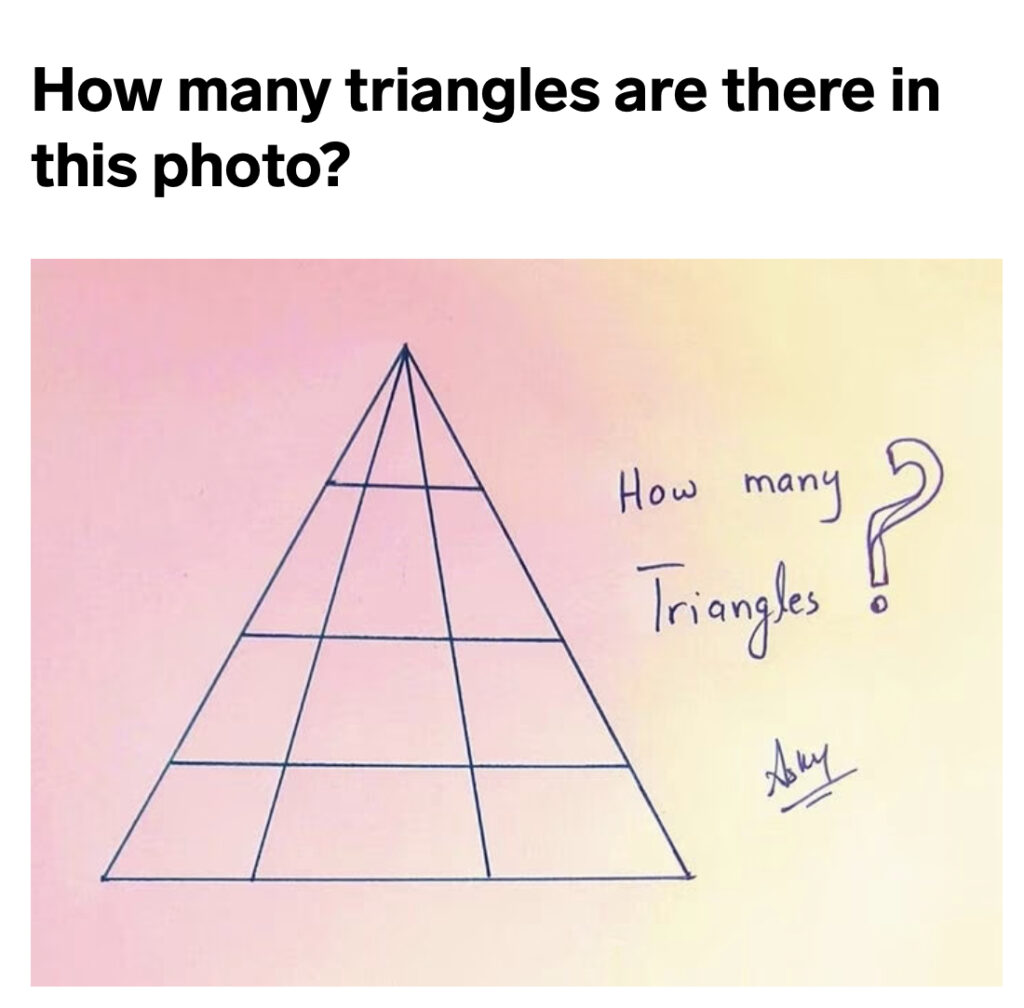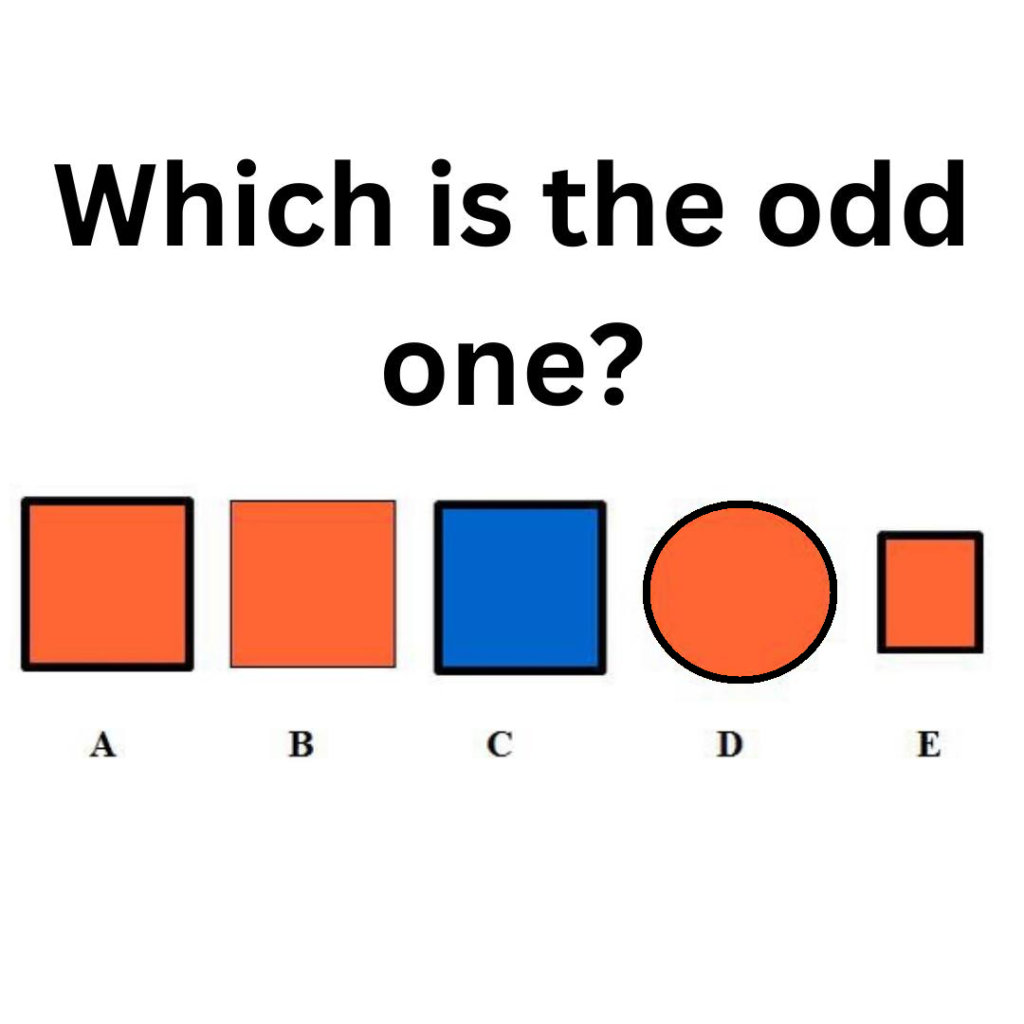Question:
The Puzzle of Mathematical Relations
Answer:
23
Explanation
Get ready to put your mathematical skills to the test as we embark on a journey through a puzzling series of mathematical relations. In this exhilarating quiz, we encounter a range of objects, from rulers to erasers and books, all intertwined with fascinating equations. Prepare to stretch your mental muscles because this challenge is sure to leave you both puzzled and enlightened.
The Puzzle: Our journey begins with a set of images representing various objects, each associated with a mathematical relation. Let’s recap the relations we have encountered so far:
- Ruler + Ruler = 32
- Pencil + Pencil – Ruler = 4
- Eraser + Eraser = 6
- Book + Book + Pencil = 12
- Ruler + Eraser! + Book^2 = ?
Calculations and Solutions: To solve this captivating puzzle, we need to employ a combination of mathematical operations and logical deductions. Let’s review the calculations and solutions for each relation:
- Ruler + Ruler = 32: By applying simple addition, we deduce that one ruler is equal to 16.
- Pencil + Pencil – Ruler = 4. We solve this as: 2xPencil – 16 = 4, which means that 2xPencil = 20, that is one Pencil = 10, we conclude that one pencil is equal to 10.
- Eraser + Eraser = 6: Here, we have a straightforward addition that reveals the value of one eraser as 3.
- Book + Book + Pencil = 12: that is (2xBook) + 10 = 12. By subtracting the 10 from the total sum of 12, we find that two books must equal 2. Dividing by 2, we arrive at the conclusion that one book is equal to 1.
The Final Challenge: Now, armed with our newfound knowledge of mathematical relations, we encounter the ultimate test. The equation before us is as follows:
Ruler + Eraser! + Book^2 = ?
But what does this mean? Fear not, as we unravel the enigmatic symbols one by one. The term “Eraser!” represents the factorial operation applied to the value of one eraser (3).
Factorial is a mathematical operation denoted by the exclamation mark (!). It involves multiplying a given number by all the positive integers less than itself down to 1. For example:
- 1! = 1
- 2! = 2 x 1 = 2
- 3! = 3 x 2 x 1 = 6
In general, n! represents the factorial of a positive integer n.
Now, let’s incorporate the correct calculations into our fun article format. Substituting the known values into the equation, we have:
Ruler + Eraser! + Book^2 = 16 + (3 x 2 x 1) + 1^2 = 16 + 6 + 1 = 23.
Conclusion: Congratulations! You have successfully navigated through a labyrinth of mathematical relations and calculations. By deciphering the clues hidden within each equation, you unveiled the value of each object and tackled the final challenge using factorial operations.
Remember, puzzles like these not only entertain and challenge us but also sharpen our mathematical acumen. They encourage us to think creatively and apply our knowledge in unique ways. Whether it’s unraveling equations or exploring patterns, embracing mathematical puzzles can expand our problem-solving skills and ignite a passion for the wonders of numbers.
So, keep exploring the captivating world of mathematics, where puzzles and riddles await to be unraveled. With each challenge, you have the opportunity to sharpen your skills, broaden your understanding, and experience the joy of mathematical discovery.



